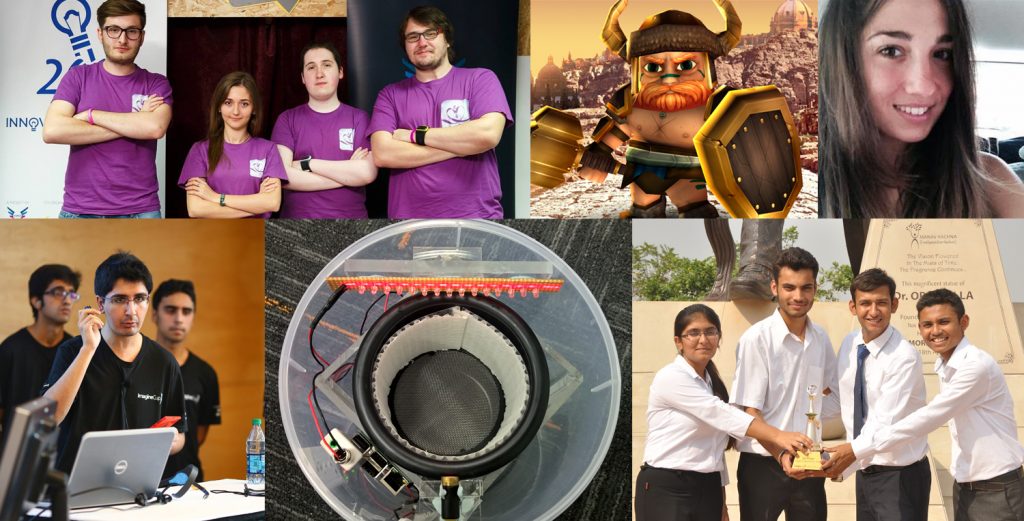
Passion, perseverance and the power of the cloud drive Imagine Cup World Finalists
Every day for 21 years, Vasiliki “Vicky” Bikia watched her beloved grandfather, Thomas Agelakis, suffer from Parkinson’s disease. He “couldn’t express himself verbally,” she says, and she saw how the disease’s hallmark tremors, slowness of movement and impaired coordination came to dominate his existence.
“It was like he was losing his identity,” says Bikia, a student in the Electrical & Computer Engineering Department at Aristotle University of Thessaloniki in Greece.
There is no cure for Parkinson’s disease, which affects between 7 million and 10 million people worldwide. But Bikia, along with fellow students Despina Efthymiadou, Dimitris Iakovakis and Konstantinos Mavrodis, are determined to help others with Windows Phone 8.1 and Windows 8.1 apps they designed to detect the early signs of Parkinson’s and provide support for patients and their families. And they are using Microsoft Azure to do it.
The students comprise Team PROGNOSIS, one of 33 teams from around the globe that will be in Seattle on July 27 to compete in the 2015 Imagine Cup World Finals, Microsoft’s global student technology competition. This year, more than half of the teams are tapping into the power of Microsoft Azure to take their projects to the next level.
There are three competition categories: Innovation, World Citizenship and Games. The first-place team from each category will face a panel of judges that includes Thomas Middleditch, star of the hit HBO show “Silicon Valley”; Alex Kipman, a Microsoft Technical Fellow and the creator of HoloLens; and Jens Bergensten, lead designer of Minecraft. Microsoft CEO Satya Nadella will crown the World Champion during the live webcast of the Imagine Cup World Championship at noon PT on July 31. The winner from each category wins $50,000 plus a boot camp experience, and the World Champion team also wins a private meeting with Nadella.
Some of the projects reflect the students’ passion and drive to improve people’s lives. Among the projects using Azure in one form or another: a mosquito monitoring and control platform, a device that lets blind and visually impaired people read printed text with a touch of their fingers and a wearable device that lets people easily exchange contacts based on a handshake.
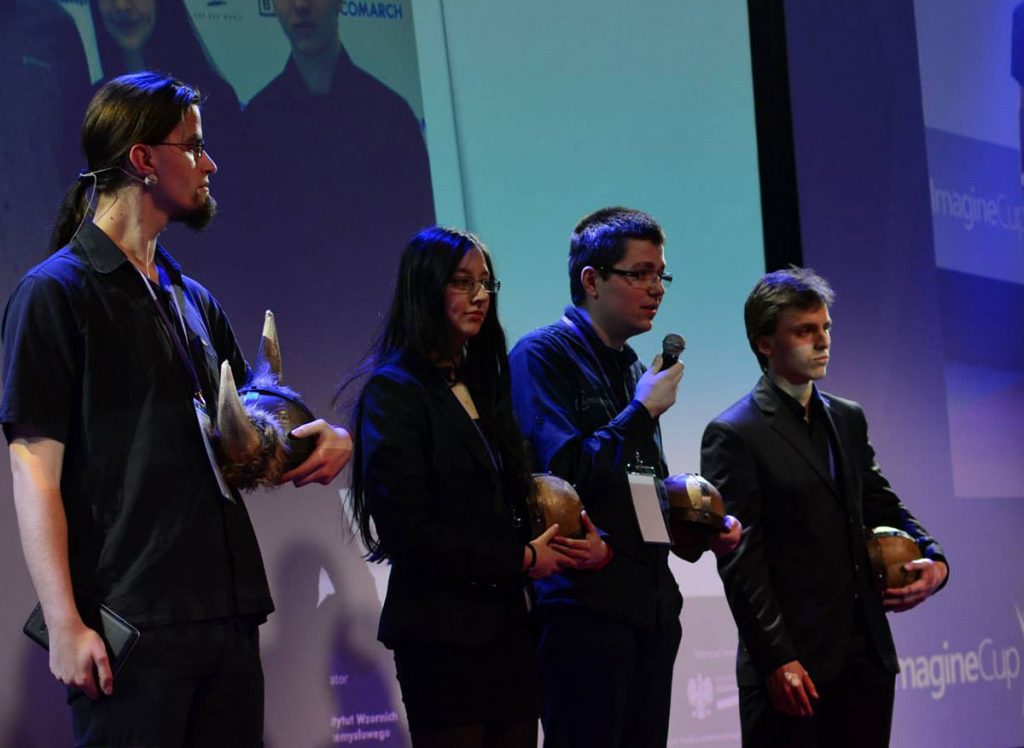
Other projects include a game from Team Serious English Name of Poland called BandBarian, which gives players a virtual avatar – a warrior from a fantasy world – that grows stronger along with the player’s physical activity. Team Epilepsy Combat of Romania created “EpSyDet,” a system for real-time detection of epileptic seizures using wearable technologies. Team Tesseract of Pakistan has developed an automated scheduler for people to find the most “optimal meeting times and routes.”
Singapore’s Team Mozter created Mozter, a mosquito-monitoring platform, to help with mosquito surveillance and control. Mosquitos aren’t merely annoying pests, of course; they’re carriers of potentially deadly illnesses such as West Nile virus, malaria, Dengue fever and yellow fever.
The team is using Microsoft Azure Virtual Machines, Azure Web Apps, Azure Mobile Services and Azure File Storage for Mozter.
Team members envision Mozter “as the future and gold standard of any national mosquito-monitoring program,” says member Kirk Yeo, a student at Temasek Polytechnic in Tampines, Singapore. “Most importantly, it will help to save lives.”
Mozter includes three major components: Data collection via a mosquito detection sensor; data processing and analytics using an Azure Virtual Machine that runs the algorithms to crunch the data the team is collecting; and a Web-based data visualization platform to “tell the story of the data collected by our sensors,” says team member Goi Jia Jian.
“There are a lot of areas where Azure Machine Learning can do the data crunching, and we are rolling out predictive analytics into different parts of the data visualizations in different phases,” he says.
“We’ve integrated the feature of visualizing predicted mosquito populations, a time-series prediction,” and are also “looking at predictive analytics for geographically related data to pinpoint where the next disease outbreak cluster might be,” says Goi.
The team has been doing field tests by placing sensors at their friends’ and relatives’ houses, and on average, receiving about 17 GB of a data each day to process.
That’s a lot of data for a relatively small-scale sample area. “Microsoft Azure really has a comprehensive set of services that makes it so much easier for us to build our project,” Yeo says. Azure “is at the very core of our project; we can’t do without it.”
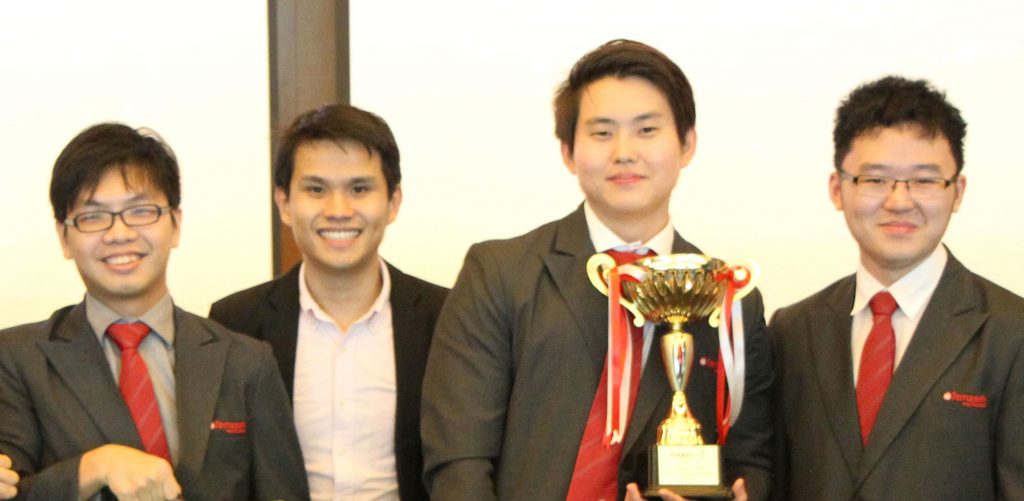
Azure has also played a key role in the development of Team Eyeluminati’s project, Manovue. The team, from India, wants to make life better for the 285 million people worldwide who are blind or have low vision; 90 percent of them live in low-income settings, according to the World Health Organization.
Team Eyeluminati members – Roopam Sharma, Akshita Sachdeva, Debajit Guha and Neeraj Saini – have spent considerable time at a school for the blind, learning first-hand of the issues and frustrations of the visually impaired.
“They confront a number of challenges everyday – from reading the label on a frozen dinner to figuring out if they’re at the right bus stop,” says Sharma.
Manovue is a wearable, haptic device that lets a blind or visually impaired person read printed text by moving their finger over the text. The device also helps that person “move around freely outside well-known environments by providing haptic feedback,” says Sharma.
The device uses a coordinated Windows Phone application, including Cortana for voice commands.
Azure has played a key role in the development of the mobile phone application, as well as the reading portion of the device, Sharma says. “We are making use of Microsoft Azure for the image processing and text-to-speech conversion to enable a person to scan any printed wild text, and the device reads out what’s written.”
Before starting with Azure, “Our project would only support one language: English,” Sharma says. “Azure Optical Character Recognition (OCR) Service reads text from images in a machine-usable character stream. It automatically detects the language, and 21 languages are supported.”
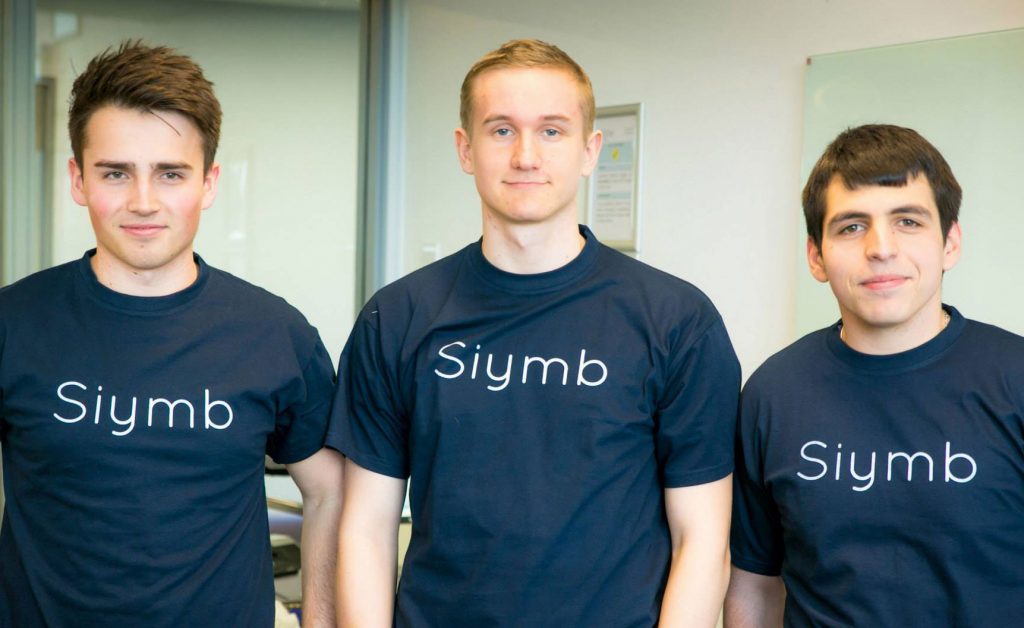
Team Siymb from the United Kingdom wants to make it possible for people to talk more in any language and “shatter the fishbowls full of business cards” that live in conference rooms and meeting venues around the world. The University of Exeter students’ project involves using an “inexpensive wearable” they’ll make available at such gatherings “to transform the way people interact with each other.”
Simply by shaking hands while wearing the gadget at an event, participants can exchange contact information without needing to fumble around on their phones to keep track of it. “Staring at a screen while around people is a horrible and antisocial trend,” says Team Siymb member Konstantin Delov. “Our technology helps build more conversations, rather than breaking them.”
Delov says without the tools that Microsoft Azure provides, “our concept would have been unachievable.”
Among Azure’s strengths, he says, are its data analytics features, which help the team detect data patterns in real time.
“In the event industry, this means that if something goes wrong, we’re able to prompt the event organizer before it’s too late,” Delov says. “For example, we can put the number of connections happening in an event for a certain period of time against historical data for that same venue and let the people in charge know if things aren’t going as well as normally.”
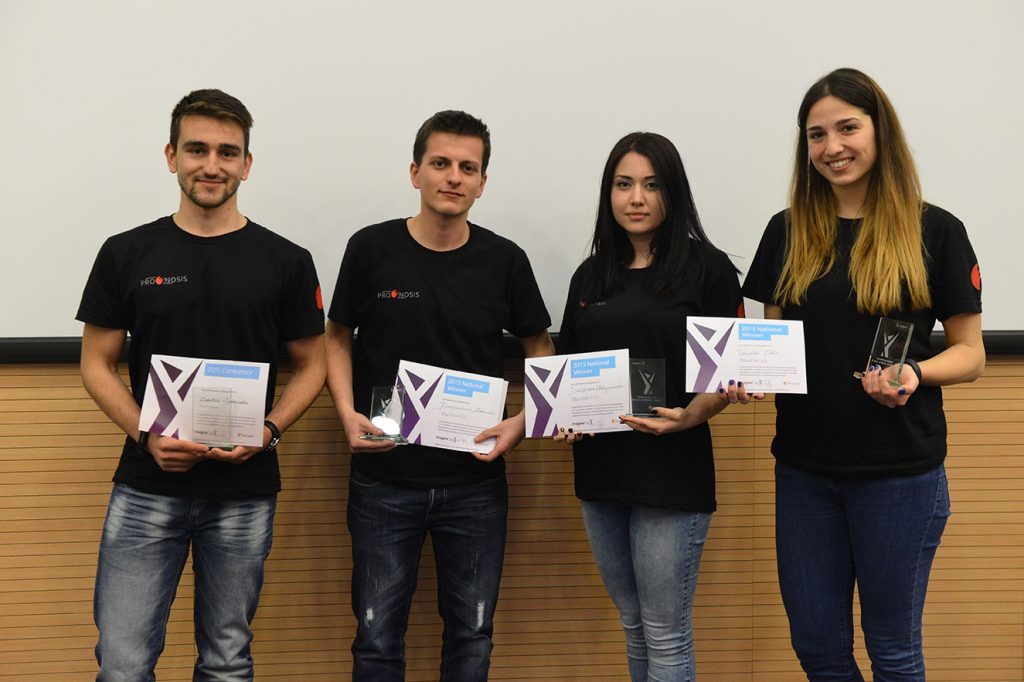
Team PROGNOSIS chose to use Azure “basically as an umbrella, enclosing all our modules,” which include early detection for Parkinson’s, intervention and a doctors’ app, Bikia says. Azure “joins them together in an efficient and robust way, while at the same time it respects the privacy of the medical data being processed.”
Bikia, whose nation is undergoing financial turmoil, is grateful for the opportunity to compete with so many talented students from around the world.
“In a country like Greece, where everything seems so unstable and uncertain, this project allows me to dream and have expectations for my future,” she says.
While many of this year’s Imagine Cup competitors are using sophisticated Microsoft Azure services in their projects, you don’t need to be an expert to get started tapping into the power of the cloud today. Student developers can register for Microsoft Azure and learn how to host their Web apps or websites at no cost.
And, of course, be sure to tune into the Imagine Cup World Championship live webcast at noon PT on July 31 to watch Nadella crown the next Imagine Cup Champion.
Lead Photo: Top, left to right: Team Epilepsy Combat, the virtual avatar in the Team Serious English Name’s BandBarian game and Team PROGNOSIS member Vicky Bikia. Bottom, left to right: Team Tesseract, the mosquito sensor used by Team Mozter; and Team Eyeluminati.















